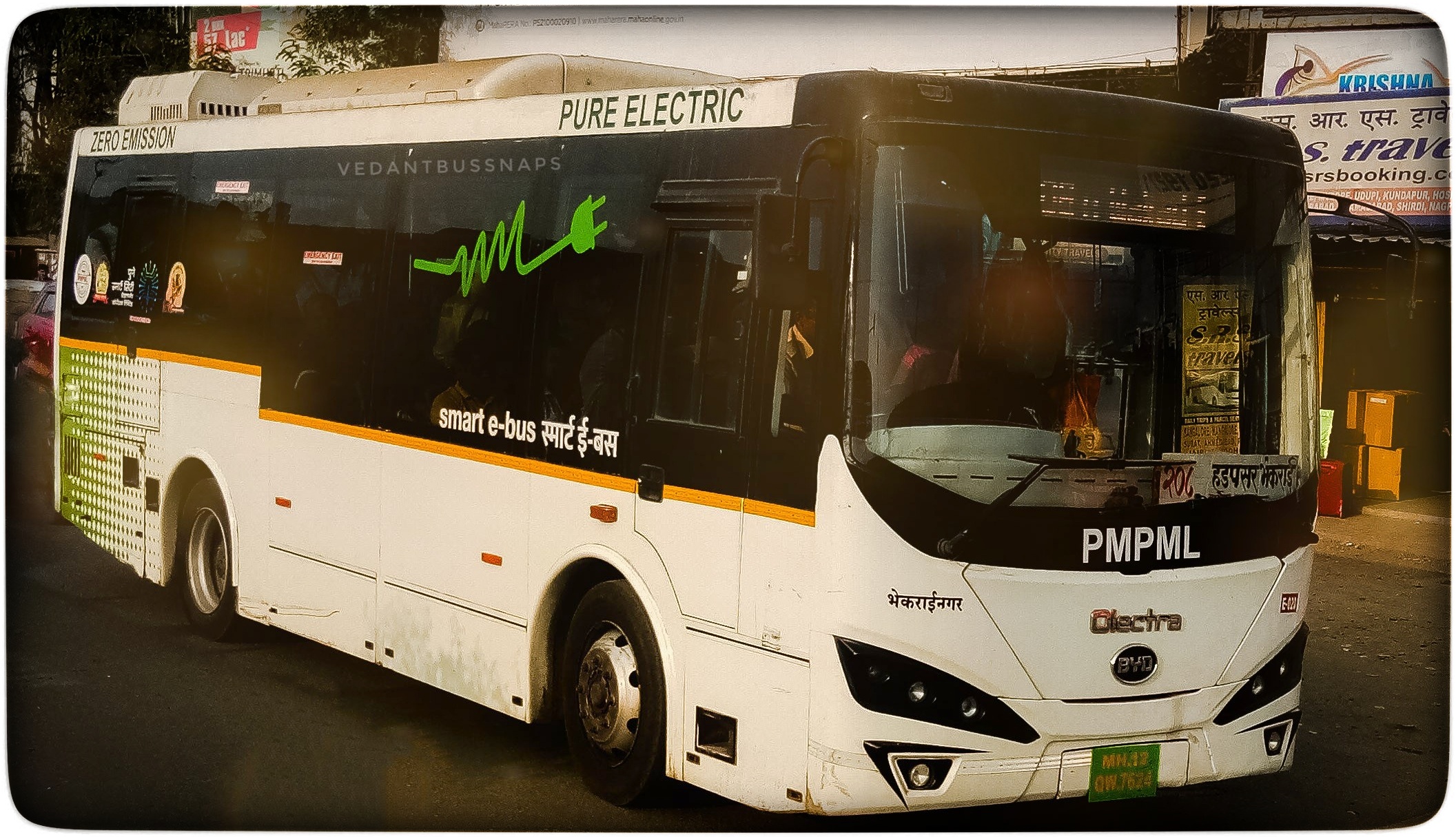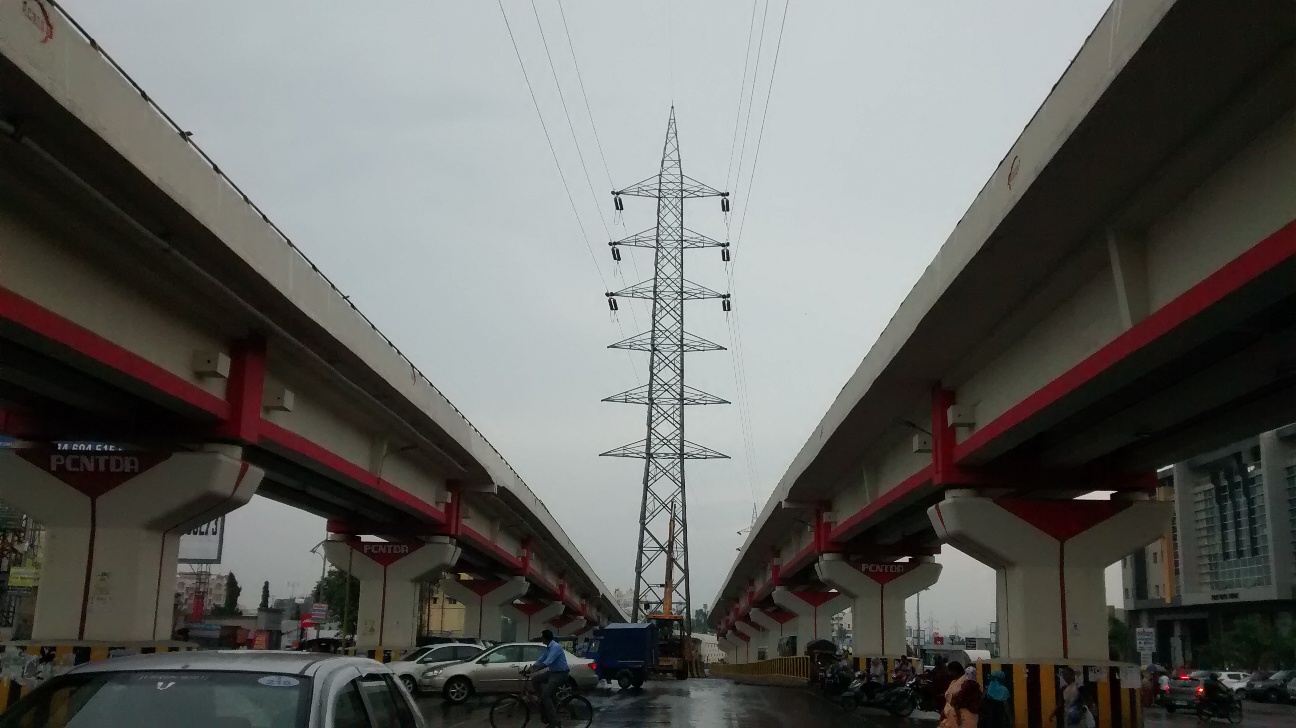Rainbow BRTS on:
[Wikipedia]
[Google]
[Amazon]
Rainbow BRTS is a bus rapid transit system in the city of


 Feeder bus routes or regular services are run by PMPML from various locations in the city up to the BRT corridors.
The system will when completed comprise eight routes with a total length of 112 km, with improved street lighting and passenger facilities on the roads used by the system. It will require around 650 buses to operate the complete network. The system will be substantially different from that in neighbouring
Feeder bus routes or regular services are run by PMPML from various locations in the city up to the BRT corridors.
The system will when completed comprise eight routes with a total length of 112 km, with improved street lighting and passenger facilities on the roads used by the system. It will require around 650 buses to operate the complete network. The system will be substantially different from that in neighbouring


Rainbow BRTS
*
Sangamwadi-Vishrantwadi Route to become operational today
BRTS pilot to run on Sunday
From the bus to tickets, BRT's first run finds many fans
On day three, a smooth ride for BRTS
BRTS work on other roads begins
{{Maharashtra transit Bus rapid transit in India Proposed bus rapid transit in India Transport in Pimpri-Chinchwad Transport in Pune
Pune
Pune ( ; , ISO 15919, ISO: ), previously spelled in English as Poona (List of renamed Indian cities and states#Maharashtra, the official name until 1978), is a city in the state of Maharashtra in the Deccan Plateau, Deccan plateau in Western ...
. The system is operated by the Pune Mahanagar Parivahan Mahamandal Limited (PMPML). The infrastructure has been developed by the Pune Municipal Corporation
Pune Municipal Corporation (PMC) is the civic body that governs the inner limits of Pune, India. It is in charge of the civic needs and infrastructure of the metropolis, which is spread over an area of 500 sq. km. and has 3.4 million resident ...
& Pimpri Chinchwad Municipal Corporation, Pune. The project currently envisages 113 km of dedicated bus corridors along with buses, bus stations, terminals and intelligent transit management system.
The Rainbow BRTS project is being implemented with the financial support of Jawaharlal Nehru National Urban Renewal Mission (JnNURM) of the Government of India. Additionally, specific components of the project in PCMC limits are being funded under the ‘Sustainable Urban Transport Project’, which is an initiative of the Ministry of Urban Development, Government of India and is supported by The World Bank
The World Bank is an international financial institution that provides loans and grants to the governments of low- and middle-income countries for the purposes of economic development.
The World Bank is the collective name for the Internati ...
, UNDP
The United Nations Development Programme (UNDP) is a United Nations agency tasked with helping countries eliminate poverty and achieve sustainable economic growth and human development. The UNDP emphasizes on developing local capacity towar ...
& GEF.
History
Pune
Pune ( ; , ISO 15919, ISO: ), previously spelled in English as Poona (List of renamed Indian cities and states#Maharashtra, the official name until 1978), is a city in the state of Maharashtra in the Deccan Plateau, Deccan plateau in Western ...
was the second city in India to experiment with a bus rapid transit system, after Ahmedabad, which opened the nation's first BRT in 2010. PMPML started plying pilot routes in December 2006.
The Hadapsar-Katraj pilot project consisted of of bus lanes along the Pune Satara Road using airconditioned, low-floor more than 500 Volvo B7RLE
The Volvo B7RLE is a low-entry single-deck bus chassis manufactured by Volvo. It was superseded by the Volvo B8RLE in 2013, with production of the B7RLE continuing until 2018.
Specifications
The Volvo B7RLE is similar to its predecessor, the ...
buses initially on Katraj
Katraj is suburb of Pune in the Indian state of Maharashtra, and within the jurisdiction of Pune Municipal Corporation. Katraj is famous for its Peshwa-era (18th century) lake that supplied water to the city during that period. The village l ...
- Swargate
Swargate is an area of Pune, Maharashtra, India. This is one of the busiest areas in Pune. The Swargate connects Pune to various areas like Hadapsar, Fursungi, Dhankawadi, Bibwewadi, etc. The areas under Swargate include Guru Nanak Nagar, Muk ...
- Hadapsar
Hadapsar is a developed suburb in eastern Pune City, Maharashtra, India. Since 1990, Hadapsar developed into a major industrial area and is now one of the developed areas of Pune. It is well connected to all parts of city.
History
During t ...
. Most of these buses are not in service currently. The funding for the project came from the Government of India
The Government of India (ISO 15919, ISO: Bhārata Sarakāra, legally the Union Government or Union of India or the Central Government) is the national authority of the Republic of India, located in South Asia, consisting of States and union t ...
under the Jawaharlal Nehru National Urban Renewal Mission
Jawaharlal Nehru National Urban Renewal Mission (JNNURM) was a massive city-modernization scheme launched by the Government of India under the Ministry of Urban Development (India), Ministry of Urban Development. It envisaged a total investmen ...
. Total of route was proposed for Rainbow BRTS. Now regular PMPML buses ply on the Hadapsar-Katraj corridor of BRTS.
The Pimpri-Chinchwad BRTS was announced in December 2008, when eight routes covering 112 km were proposed. Construction of the first route was due to be completed within 18 months. By January 2009, 90% of construction work on an 11 km pilot route between Nigdi and Dapodi
Dapodi (earlier: Dapoorie) is a neighbourhood in Pimpri Chinchwad in the northwestern Pune, India. It is located in the northwest area of the city. Dapodi is situated on the banks of Pavana river and Mula River. The neighbourhood of Dapodi ...
had been completed. However, a string of disputes between the Pimpri-Chinchwad Municipal Corporation
Pimpri Chinchwad Municipal Corporation (PCMC) is the Municipal Corporations in India, civic body that governs Pimpri, Akurdi, Chinchwad, Nigdi, and the remainder of the northwestern city limits of Pune, India. It was established on 11 October ...
(PCMC), civic administrators and corporators led to the project being delayed, with corporators citing funding difficulties and problems encountered on the similar Delhi BRTS and Rainbow BRTS projects as the causes.
In September 2009 difficulties procuring the 650 buses required to run on the system had led to the project being indefinitely postponed. The new bus shelters were sited on the wrong side of the road, leading to delays in their construction, while passenger information systems had yet to be installed. A month later it was revealed that the cost of the project had overrun by 230 crore, around 50% of the total project cost. By May 2010, funding for the completion of four BRT routes had been agreed, with the remaining four sanctioned by the national government but not yet funded. A number of high-rise buildings along the routes had also been approved for construction.
Both the systems were merged to form Rainbow BRTS.
By April 2014 two of the routes were under construction, with the first station near to completion. The first two lines were expected to be operational by the end of March or the beginning of April 2015. The Sangvi-Kiwale corridor (earlier named as Aundh-Ravet corridor) was thrown open to public on 5 September 2015.
Description


 Feeder bus routes or regular services are run by PMPML from various locations in the city up to the BRT corridors.
The system will when completed comprise eight routes with a total length of 112 km, with improved street lighting and passenger facilities on the roads used by the system. It will require around 650 buses to operate the complete network. The system will be substantially different from that in neighbouring
Feeder bus routes or regular services are run by PMPML from various locations in the city up to the BRT corridors.
The system will when completed comprise eight routes with a total length of 112 km, with improved street lighting and passenger facilities on the roads used by the system. It will require around 650 buses to operate the complete network. The system will be substantially different from that in neighbouring Pune
Pune ( ; , ISO 15919, ISO: ), previously spelled in English as Poona (List of renamed Indian cities and states#Maharashtra, the official name until 1978), is a city in the state of Maharashtra in the Deccan Plateau, Deccan plateau in Western ...
, with wider roads and grade separation allowing a more substantial network to be constructed.
The buses and bus stops alike are integrated via the Integrated Traffic Management System (ITMS) which enable travellers to know the ETA of the bus. The bus stops and the buses are equipped with automatic doors, that open when they are in close proximity. The bus-stops are easily accessible by a low-gradient ramp on one end. Signals are being installed near the bus stops to enable pedestrians to cross the road.
Routes


Phase 1 (2006)
A pilot system was constructed on the Katraj - Swargate - Hadapsar corridor and operations began in December 2006. At a time when 'BRT' acronym was new to India and there was limited nationwide understanding of requirements for such an advanced public transport system, Pune was the first city in India to implement and operationalise a high capacity bus system on two corridors: * Swargate–Hadapsar (East‐West Corridor) – 10.2 km * Swargate–Katraj (North‐South Corridor) – 5.8 km The infrastructure and operations was an improvement over the regular bus services while many features which are intrinsic to a Bus Rapid Transit System were not a part of it. The infrastructure components included widening of roads, construction of footpaths and cycle tracks, laying of municipal services like water supply and drainage lines, utility ducts, construction of BRT lane‐segregators, bus stops, installation of Passenger Information System, etc. The Ministry of Urban Development, Government of India provided financial support for the project. However, with the construction of 3 flyovers along the route, the pilot corridor has now been interrupted at various points and the use of the dedicated lane discontinued.Phase 2 (2016)
Six corridors are being developed in the current phase of the Rainbow BRTS network. #Repair work
In 2012, the PMC started to make changes on the road so that the management of traffic would become easier. A 1.5 km long flyover was constructed from Padmavati to Bhartividyapeeth, which has four lanes, plus the existing 4 lanes. The legs of the flyover are constructed on the BRTS route. The BRTS has been cancelled. Apart from the flyover, there are 2 subways constructed at Bibwewadi chowk and Kaka Halwai chowk for the pedestrians to cross. These three constructions have reduced a lot of time to travel through this route.See also
* Pune Monorail * Pune Metro * Pune Metropolitan Area * Pune Railway Station * Lohegaon AirfieldReferences
SourcesMap_Corridors.pdf
RainbowBrtPune
External links
Rainbow BRTS
*
Sangamwadi-Vishrantwadi Route to become operational today
BRTS pilot to run on Sunday
From the bus to tickets, BRT's first run finds many fans
On day three, a smooth ride for BRTS
BRTS work on other roads begins
{{Maharashtra transit Bus rapid transit in India Proposed bus rapid transit in India Transport in Pimpri-Chinchwad Transport in Pune